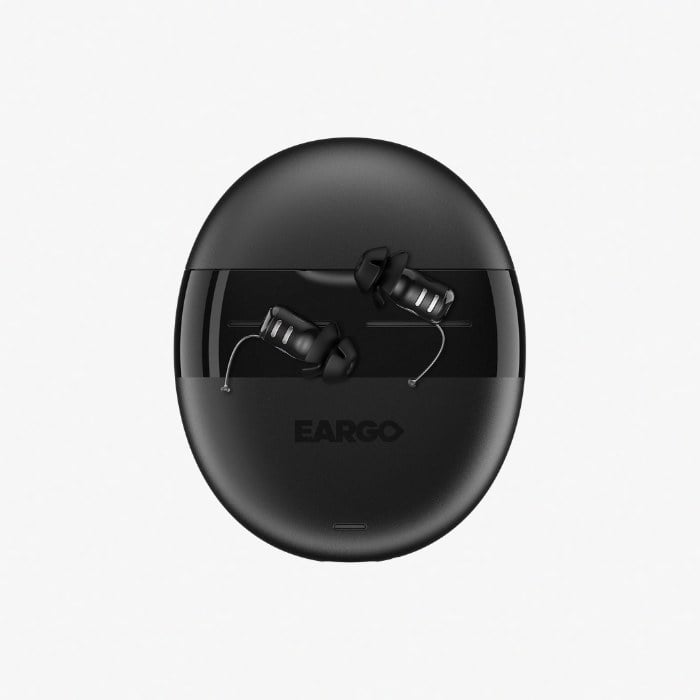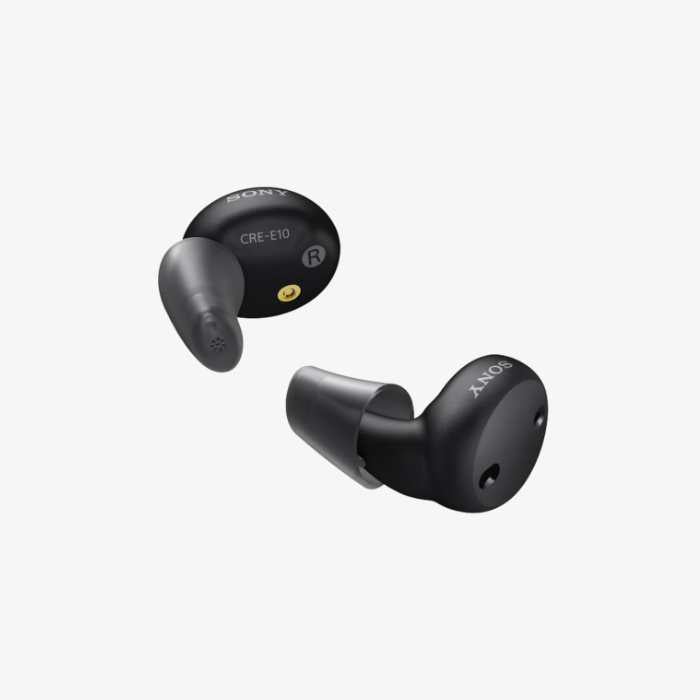Full Review
For hearing health nerds like me, the last few years have been some of the most exciting on record.
One significant cause for excitement (or angst for some) was the FDA's new guidelines that made over-the-counter hearing aids FDA-official for the first time.
Starting in October 2022, those with mild-moderate hearing loss could purchase products directly from retailers like Walgreens or online through shops like Soundly's. No more required visits to an audiologist.
One of the most exciting effects of the FDA's ruling is that tech companies like Bose, Jabra, and are jumping into the hearing aid world with their own OTC hearing aids.
Sony offers two OTC hearing aids:
CRE-C10 - Invisible style without Bluetooth or rechargeable batteries
CRE-E10 - Earbud style with Bluetooth streaming and rechargeable batteries
I was lucky enough to get my hands on the Sony CRE-C10 for an in-depth review.
In this review, I'll break down what I've learned, share some sound recordings and give you my take on how Sony's hearing aids match up to other options.
Sony CRE-C10 Background
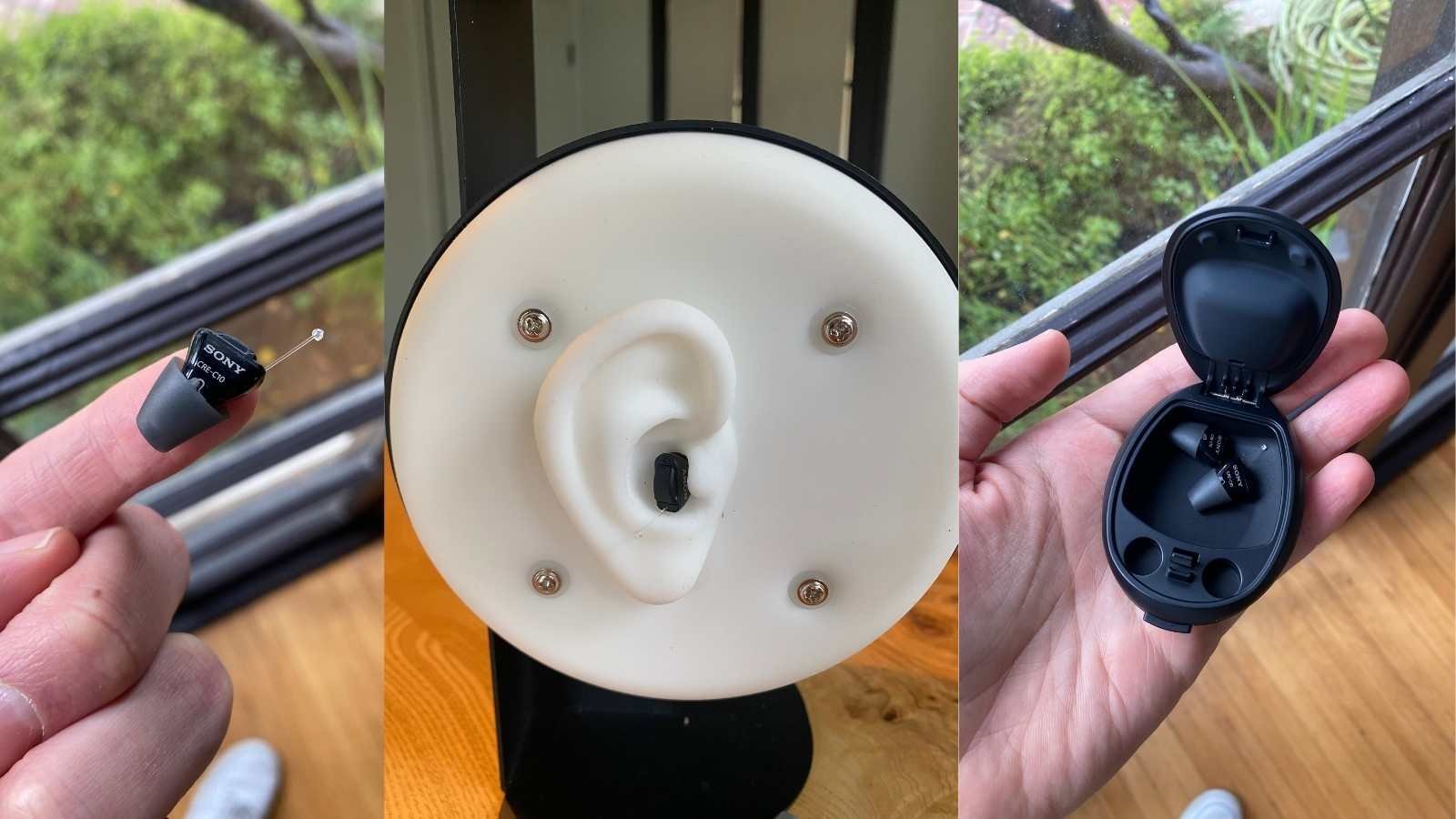
Sony teamed up with WS Audiology (the second-largest hearing company in the world) to co-create its products. Sony's CRE-C10 devices are nearly invisible and offer prescription-grade sound quality controlled through your smartphone.
CRE-C10 does not offer Bluetooth streaming or rechargeable batteries.
CRE-C10 uses a size 10 disposable battery that offers over 70 hours of continuous wear. Size 10 batteries are widely available and commonly used in small devices.
CRE-C10 comes with the Sony Hearing Control app that allows users to control the volume and sound quality of the devices. No audiologist visit is required.
Now that you understand the basics, let’s start unboxing my Sony CRE-C10 hearing aids.
Sony CRE-C10 comes in a simple little box with a well-built jewel case. Both hearing aids are inside the case and underneath the case is a storage compartment with alternate ear tip sizes, batteries, and a cleaning brush.
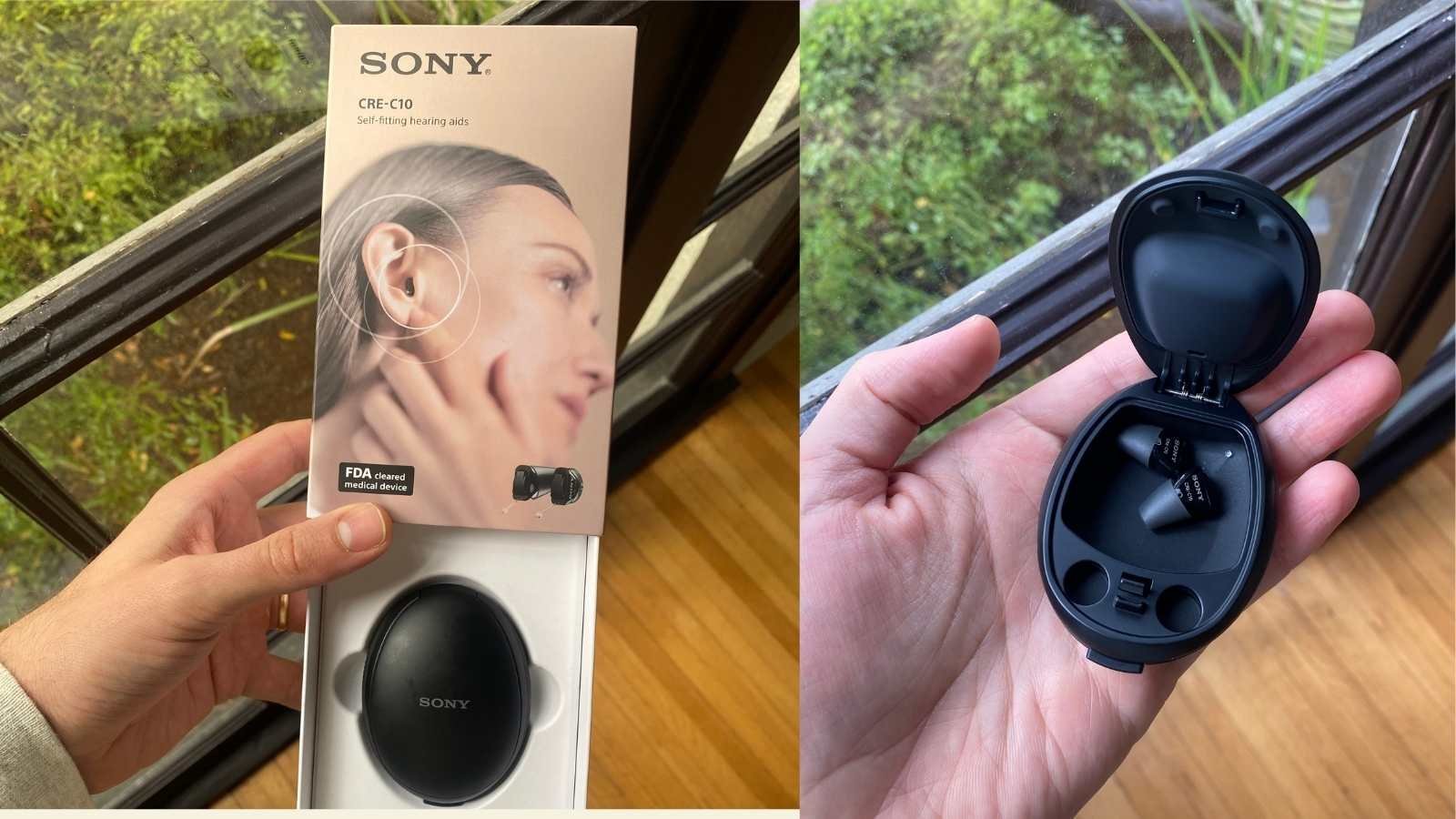
Sony CRE-C10 hearing aids use a size 10 battery that will need to be replaced after around 70 hours of use. Open the battery door to change the batteries or turn off the devices. Your Sony hearing aids will turn on automatically when the battery door is closed.
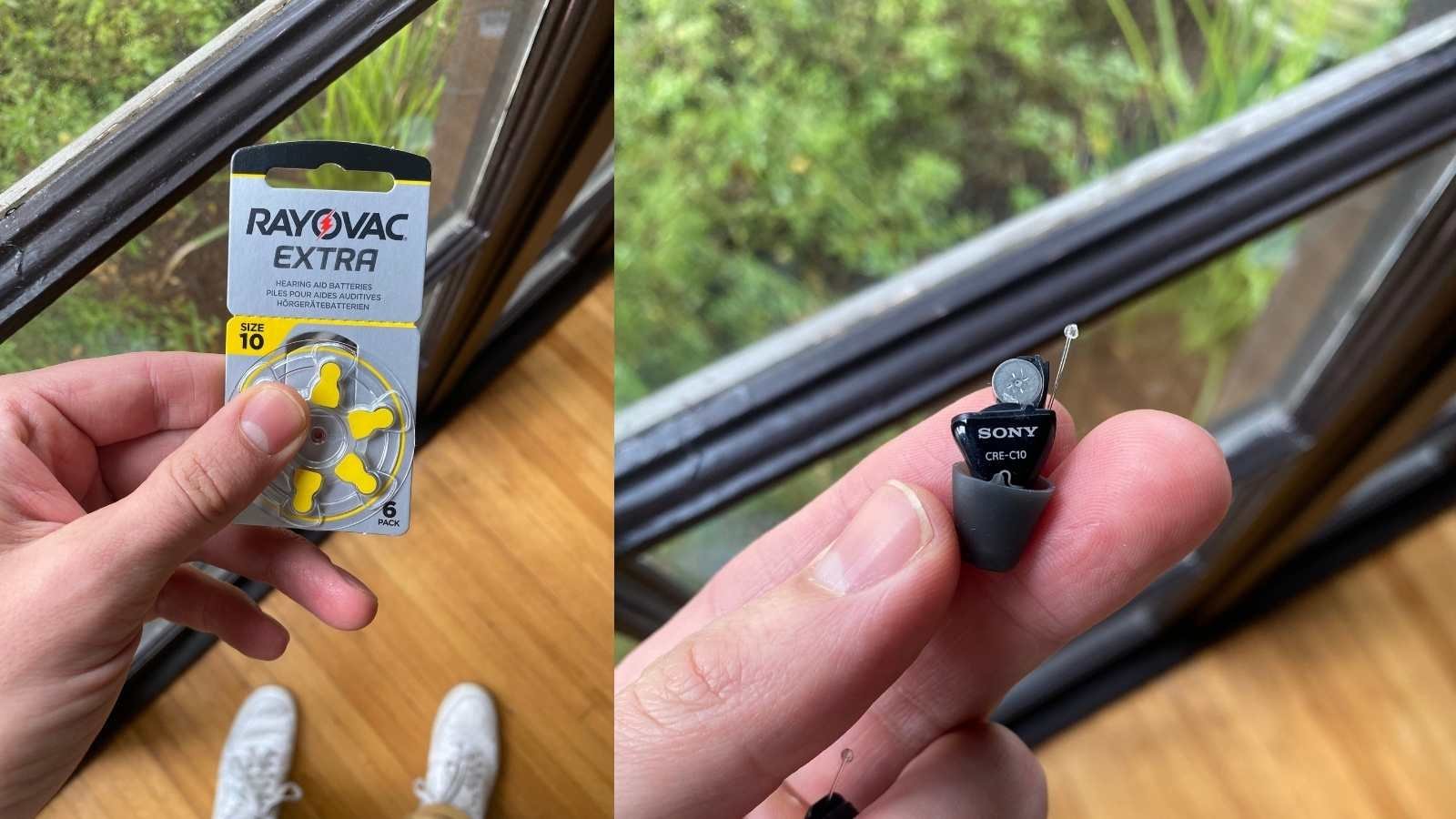
I was very impressed with the tiny profile of these devices. In the image below, you can see the Sony CRE-C10 side-by-side with Eargo’s invisible hearing aid. Eargo is officially the smallest OTC device on the market but costs more than twice as much.
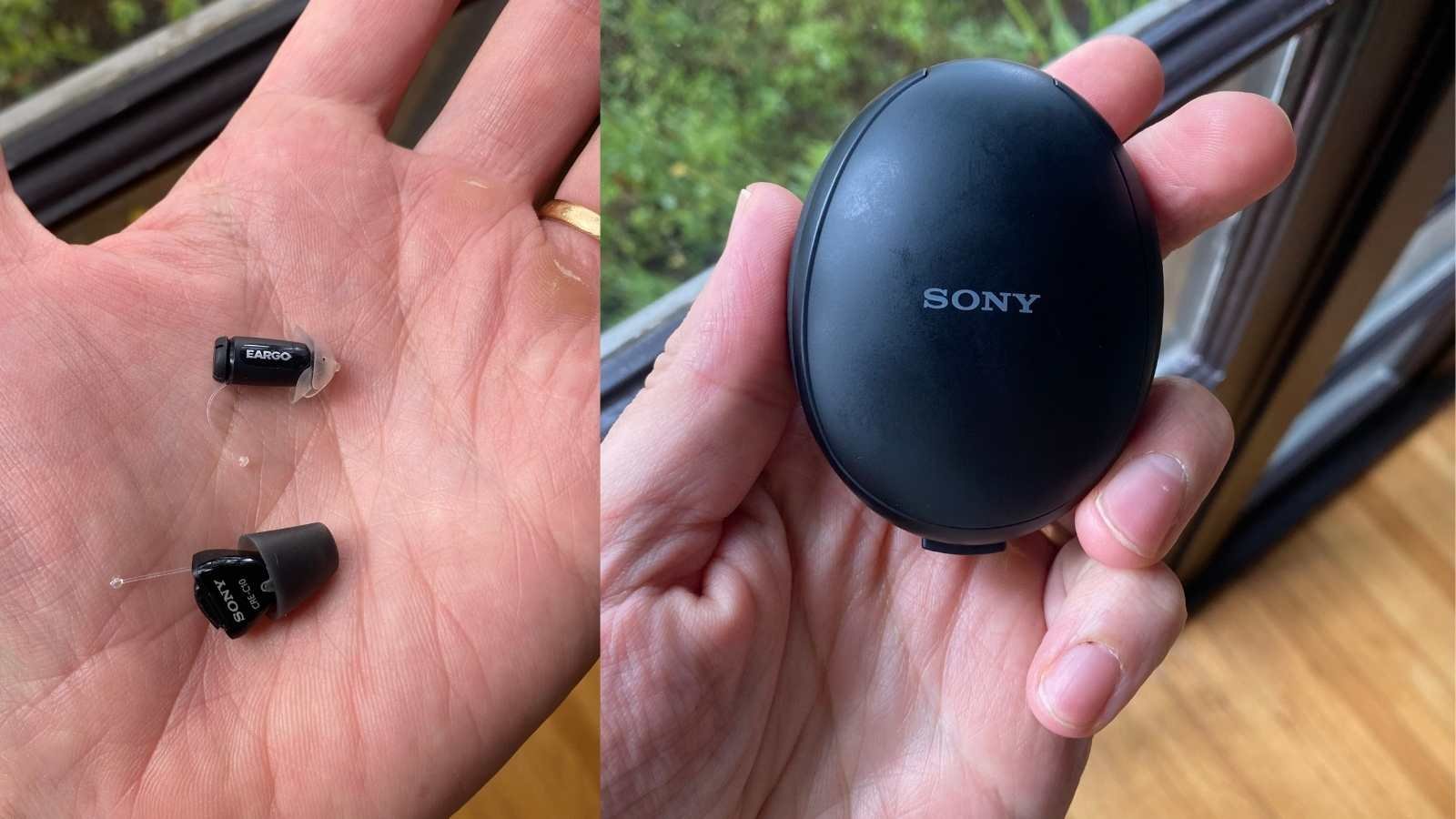
Every ear canal is different, but the CRE-C10 pretty much disappears in my ear. My wife did not notice the devices in my ear until I called them to her attention.
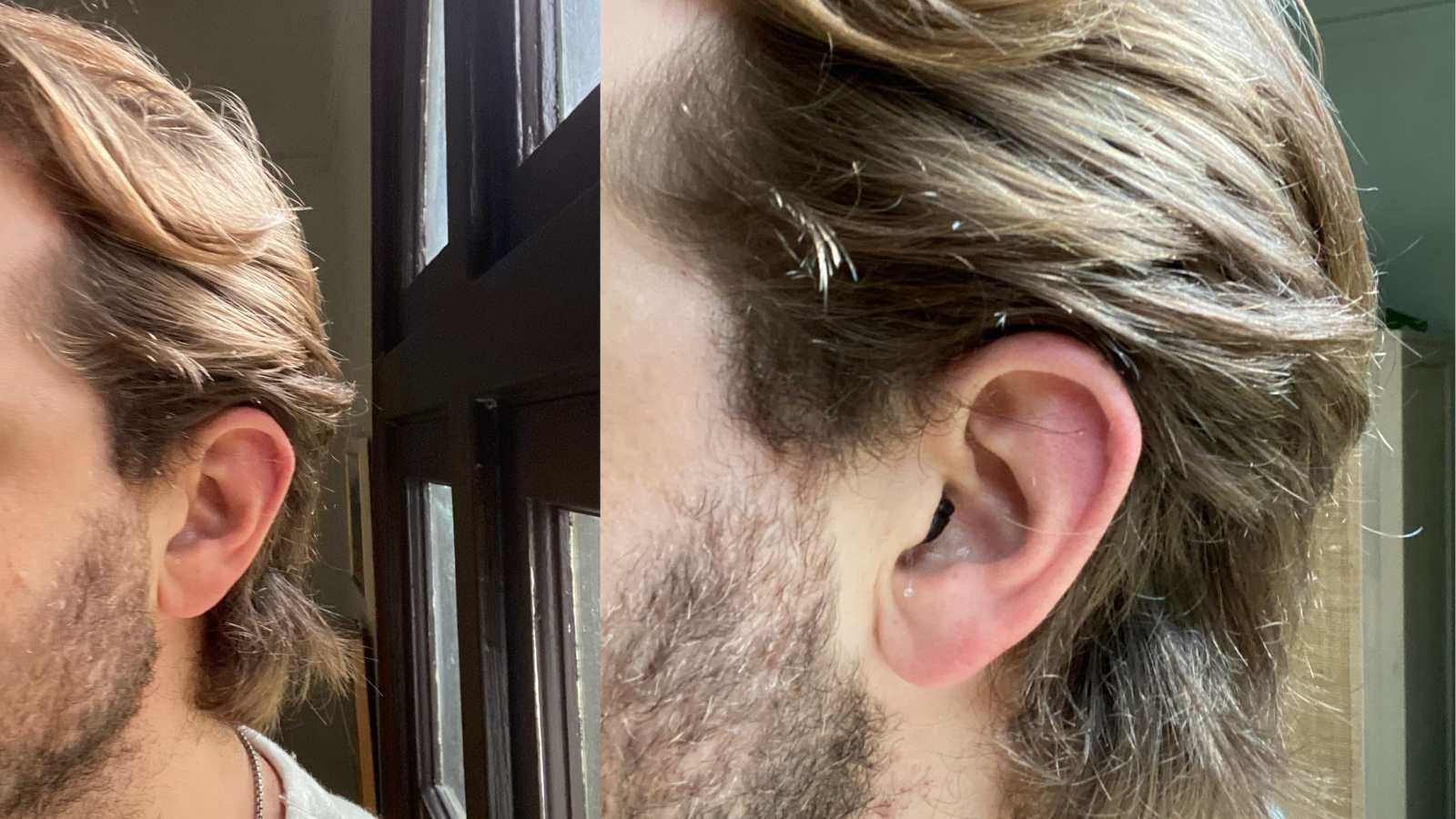
Let’s move on to the CRE-C10 app setup process.
Once my CRE-C10 hearing aids were out of the box I downloaded the Sony Hearing Control app to my iPhone (also available for Android users.
The app guided me through a basic setup process and prompted me to create a Sony account.
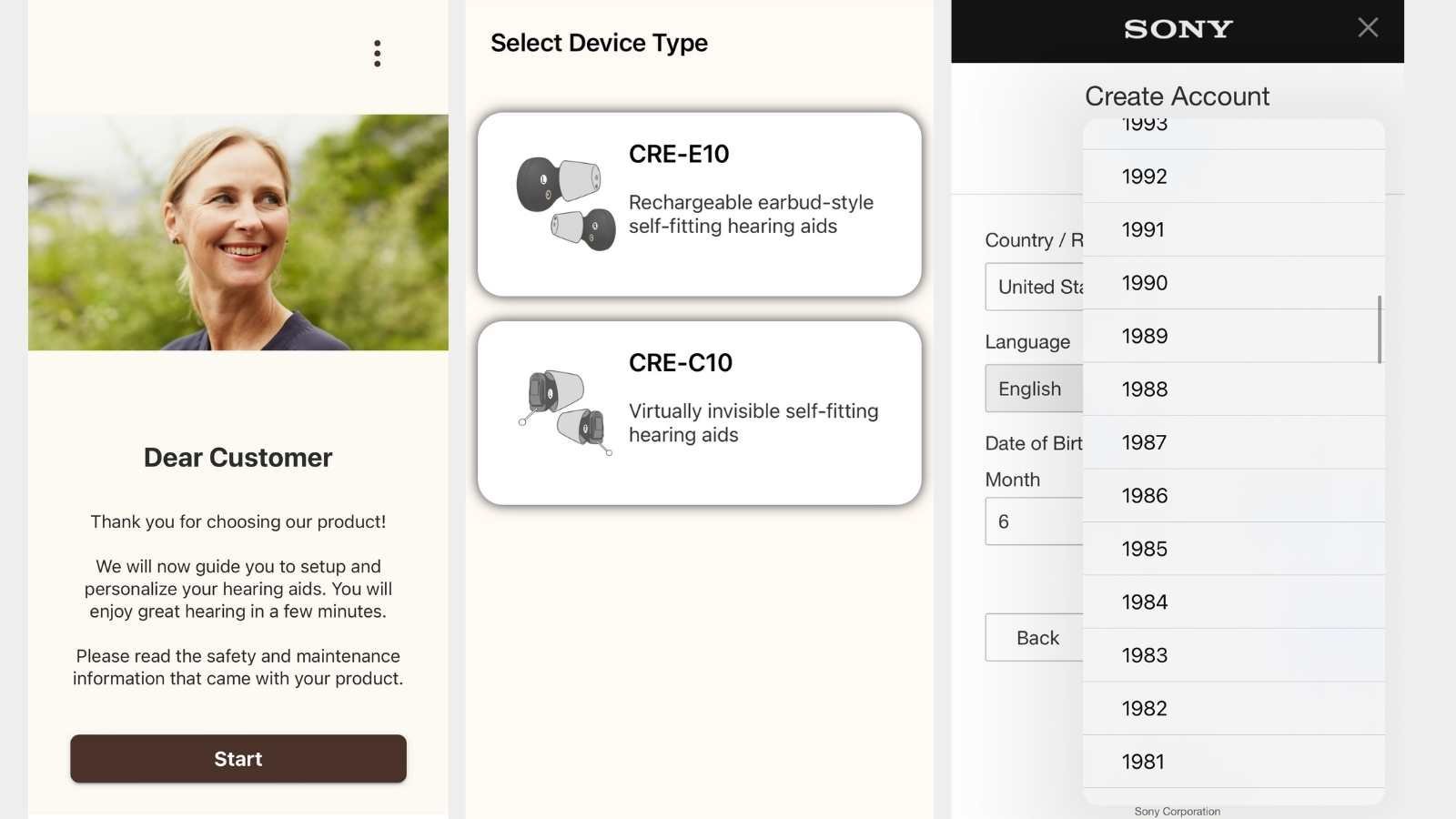
Next, the app prompted me to connect the right and left hearing aid to the app.
After the devices connected, I began a simple hearing test which played beeps at varying frequencies through my hearing aids.
After I finished the hearing test in my right and left ears, the app took a moment to “apply settings,” and my hearing aids began to deliver customized sound.
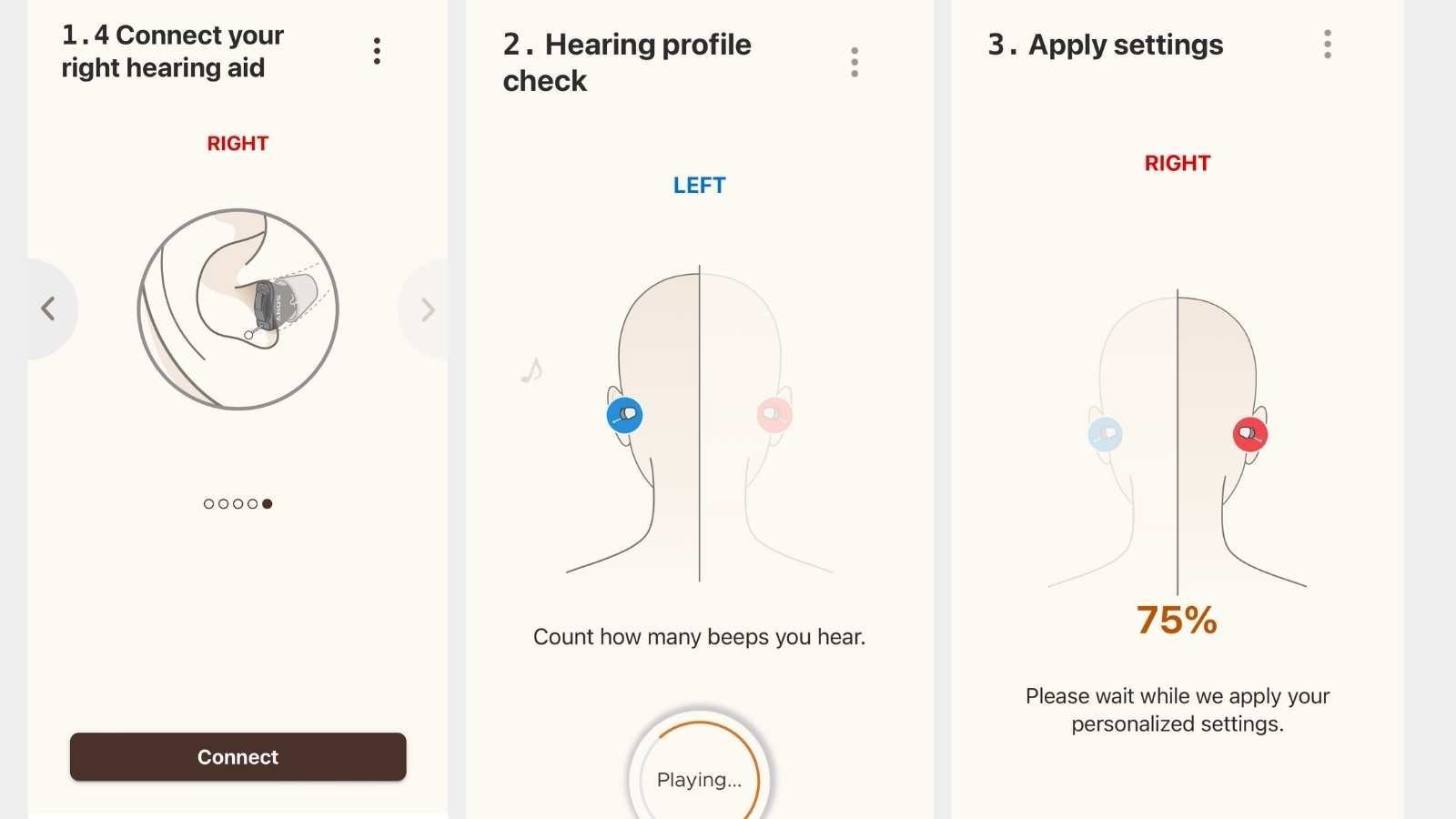
One crucial point is that the app includes a master volume setting which defaults to a seamingly low level of amplification. This setting is different than the remote control volume, which we will talk about in a moment.
I suggest you hit the three lines (pictured below), click “adjust loudness,” and turn the volume to maximum.
At the default setting that came out of the box, I could not get enough amplification for benefit.
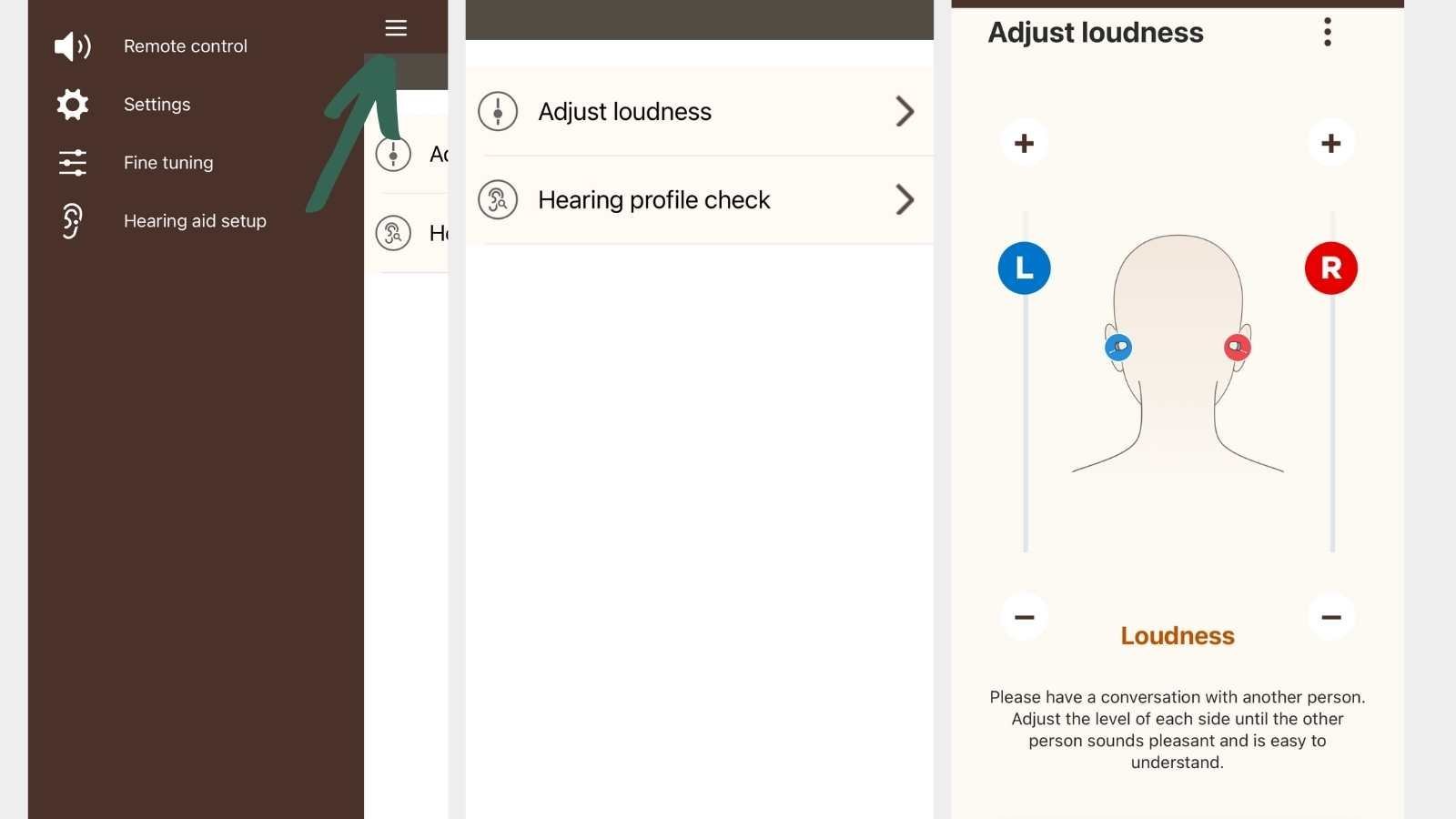
Once your hearing aids are setup, you will have access to the remote control. Sony opted for an incredibly simple remote control system with just two screens.
One screen changes the sound quality and the other screen changes the volume.
Even after boosting the volume (in the last step), I found myself wanting even more amplification from the volume screen.
I wouldn’t be surprised if Sony ads more volume in the future.
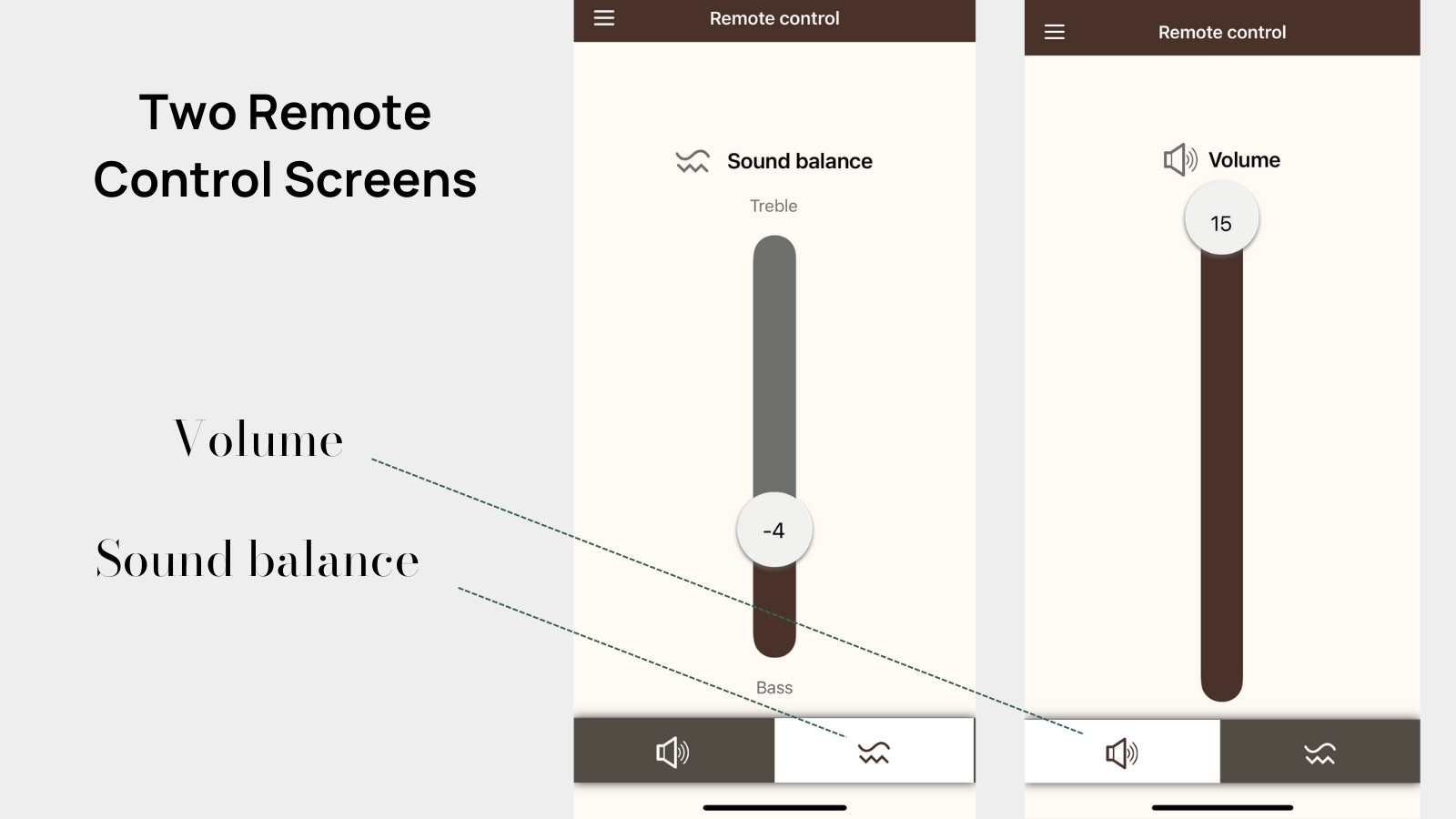
How did the Sony CRE-C10 sound?
I wore my CRE-C10 hearing aids while watching TV, interacting with co-workers, and running daily errands. These were my early impressions:
Comfort 9/10 - CRE-C10 is basically invisible in my ear, and felt very comfortable. This is a product I could wear all day and forget it’s there.
Sound quality 8/10 - I felt the sounds quality was smooth and well fit to my hearing loss. I have cookie-bite hearing loss, and some lower-cost hearing aids struggle to boost mid frequencies without overdoing it on low and high frequencies. Sony CRE-C10 didn’t seem to have this issue.
Speech understanding 7/10 - At full volume, the CRE-C10 hearing aids certainly improved my speech understanding with my wife and colleagues. My biggest critique is that I had to fully max out the volume in order to make the devices work for me. I would have appreciated a bit more volume.
Blake Cadwell is a hearing aid wearer and co-founder at Soundly. Soundly began as a passion project after Blake’s frustrating search for hearing aids. Blake regularly tests and reviews hearing technology to share his experience with Soundly’s readers.
Soundly conducts in-depth research to guide prospective hearing aid wearers. Our work is funded through reader support. When you buy through our links, we may earn a commission.


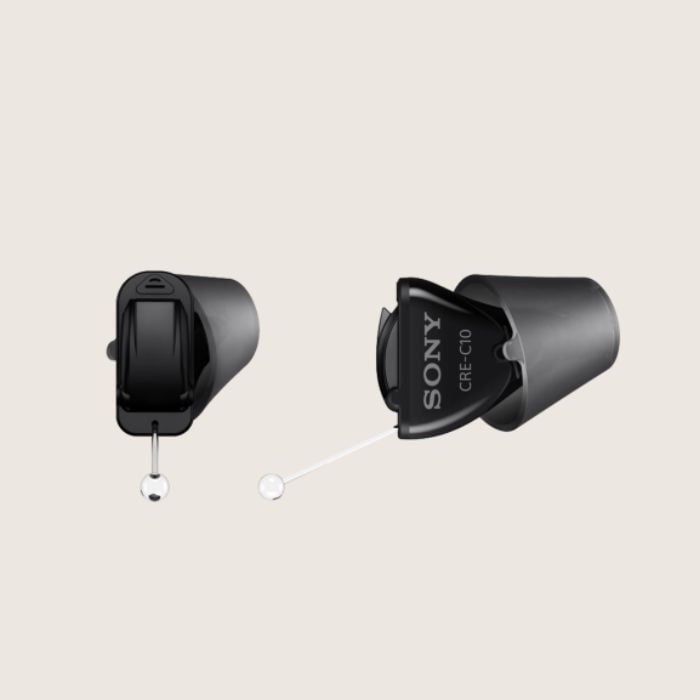
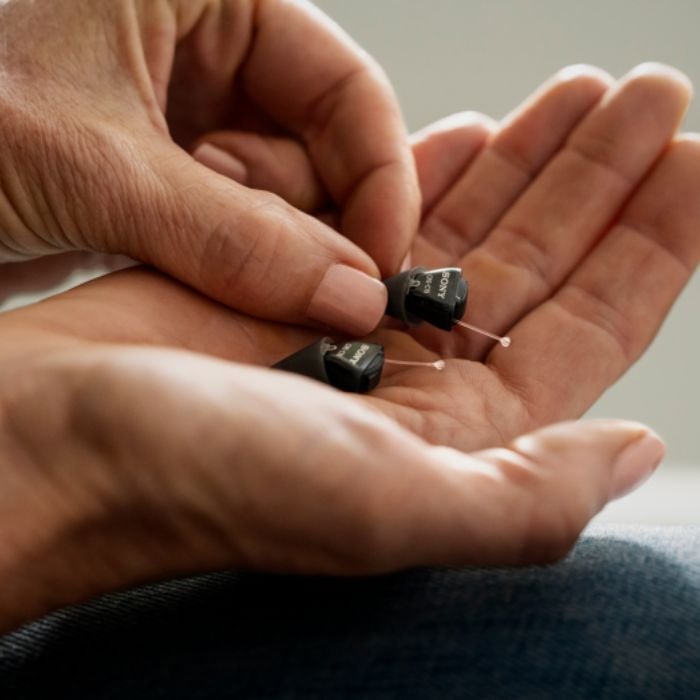

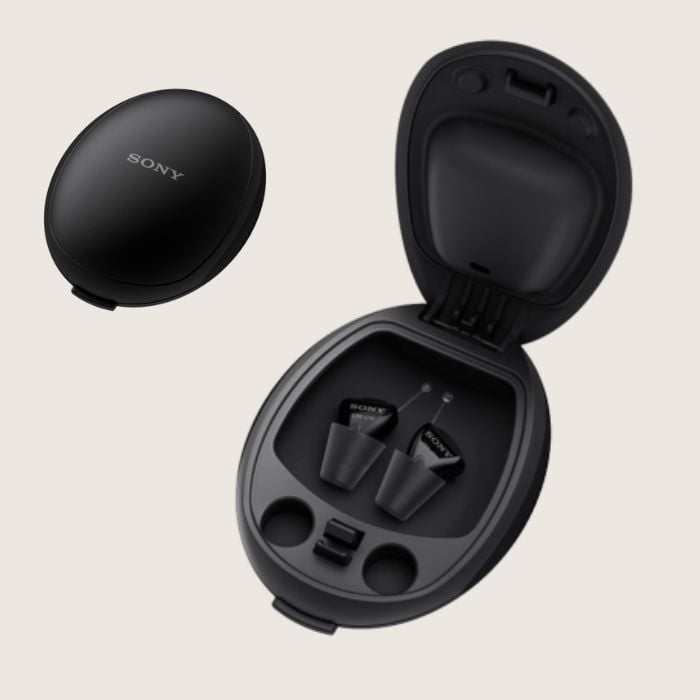
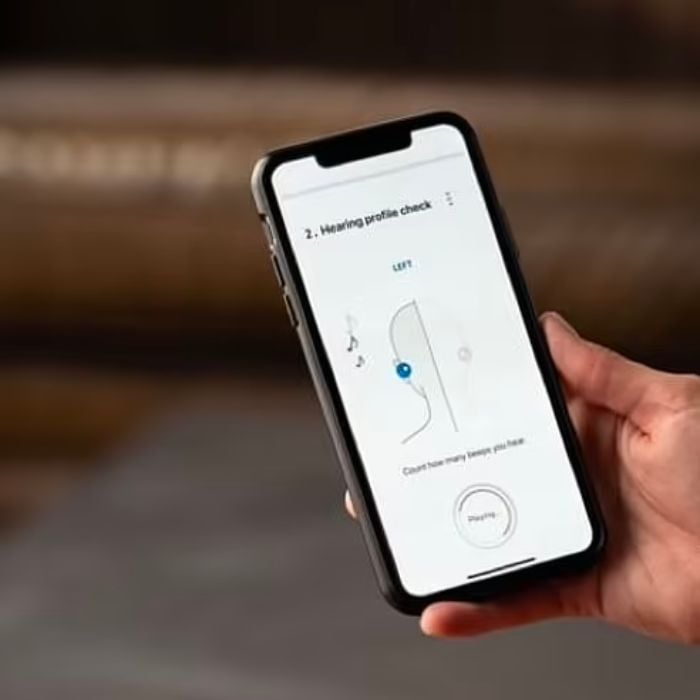
.jpg)


